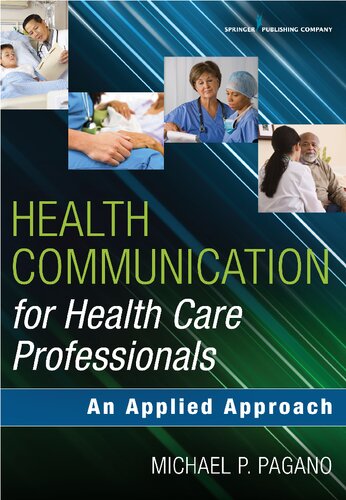

Most ebook files are in PDF format, so you can easily read them using various software such as Foxit Reader or directly on the Google Chrome browser.
Some ebook files are released by publishers in other formats such as .awz, .mobi, .epub, .fb2, etc. You may need to install specific software to read these formats on mobile/PC, such as Calibre.
Please read the tutorial at this link. https://ebooknice.com/page/post?id=faq
We offer FREE conversion to the popular formats you request; however, this may take some time. Therefore, right after payment, please email us, and we will try to provide the service as quickly as possible.
For some exceptional file formats or broken links (if any), please refrain from opening any disputes. Instead, email us first, and we will try to assist within a maximum of 6 hours.
EbookNice Team

Status:
Available4.7
29 reviewsPromotes an interdisciplinary approach to the study of health communication
According to the Joint Commission, over 75% of all serious medical errors in this country result from miscommunication. Based in these adverse realities and the author philosophy that communication is a clinical skill integral to effective health care delivery, this comprehensive text addresses thetheories and abilities needed by all health care providers. The only text written specifically for students of nursing, medicine, physical therapy,pharmacy, dentistry, physician assistants and opticians, this book incorporates recommendations for specific multimedia, suggestions for class discussion and interactive case studies to provide a rich and multi-perspective learning experience for gaining optimal expertise in effective health communication
The author underscores the importance of developing and maintaining successful relationships with patients, peers, and colleagues as a cornerstone ofeffective health care outcomes. With an emphasis on interactive learning, the text utilizescommunication theories to analyze verbal and non-verbalbehaviors in diverse health care contexts and assess which are more effective and why. Summaries at the end of each chapter discuss health communicationoutcomes. Chapters cover interpersonal and gendered communication, provider-patient communication, intercultural communication, organizationalcommunication, team communication, malpractice, palliative care, end-of-life communication, and many other topics.
Key Features: